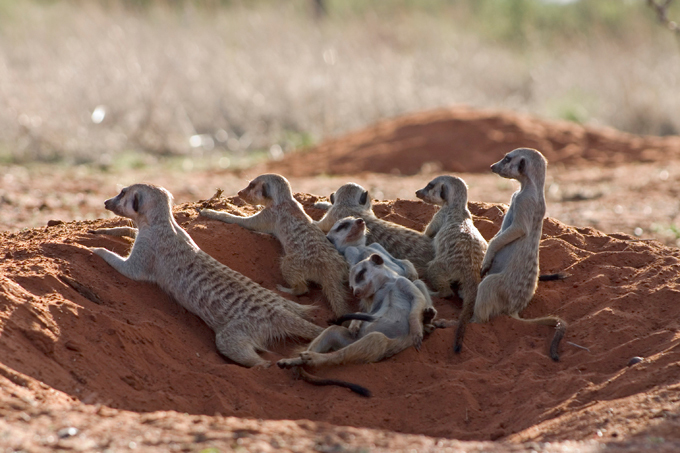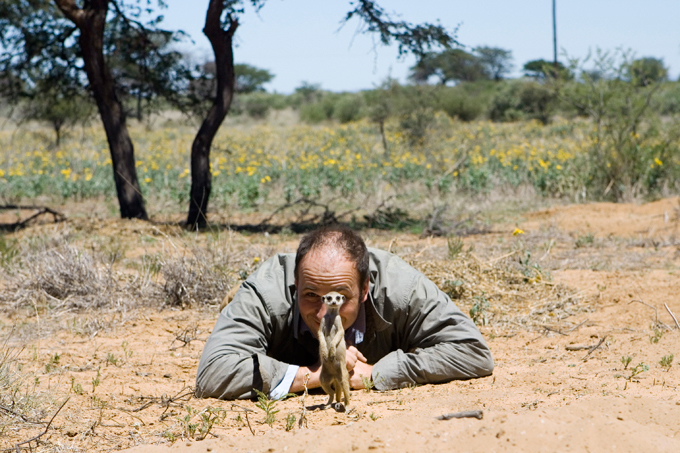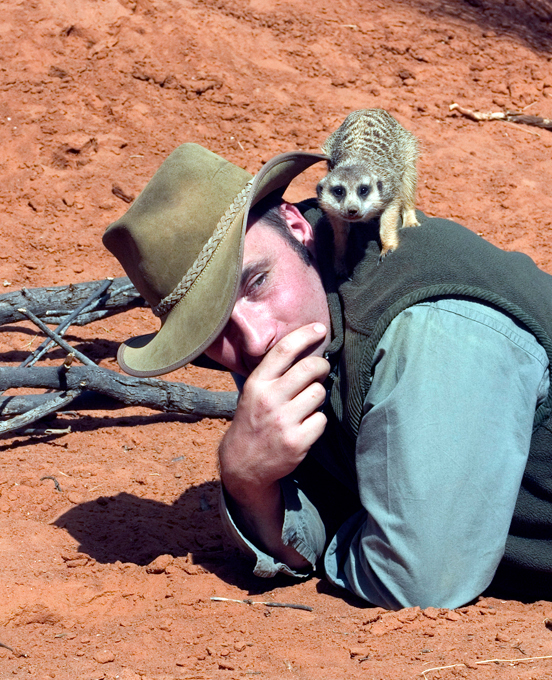Meerkats: Sunny angels

A group of meerkats is called a "mob", "gang" or "clan". A meerkat clan often contains about 20 meerkats, but some super-families have 50 or more members. In captivity, meerkats have an average life span of 12-14 years, and about half this in the wild. (All photos: Splash/All Over Press)
A group of meerkats is called a "mob", "gang" or "clan". A meerkat clan often contains about 20 meerkats, but some super-families have 50 or more members. In captivity, meerkats have an average life span of 12-14 years, and about half this in the wild. (All photos: Splash/All Over Press)

Meerkats are primarily insectivores, but also eat other animals (lizards, snakes, scorpions, spiders, plants, eggs, small mammals, millipedes, centipedes and, more rarely, small birds) and fungi (All photos: Splash/All Over Press)
Meerkats are primarily insectivores, but also eat other animals (lizards, snakes, scorpions, spiders, plants, eggs, small mammals, millipedes, centipedes and, more rarely, small birds) and fungi (All photos: Splash/All Over Press)

Meerkats are immune to certain types of venom, including the very strong venom of the scorpions of the Kalahari Desert, unlike humans (All photos: Splash/All Over Press)
Meerkats are immune to certain types of venom, including the very strong venom of the scorpions of the Kalahari Desert, unlike humans (All photos: Splash/All Over Press)

Meerkats forage in a group with one "sentry" on guard watching for predators while the others search for food. Sentry duty is usually approximately an hour long. A meerkat can dig through a quantity of sand equal to its own weight in just seconds (All photos: Splash/All Over Press)
Meerkats forage in a group with one "sentry" on guard watching for predators while the others search for food. Sentry duty is usually approximately an hour long. A meerkat can dig through a quantity of sand equal to its own weight in just seconds (All photos: Splash/All Over Press)

Meerkats are small burrowing animals, living in large underground networks with multiple entrances which they leave only during the day, except to avoid the heat of the afternoon (All photos: Splash/All Over Press)
Meerkats are small burrowing animals, living in large underground networks with multiple entrances which they leave only during the day, except to avoid the heat of the afternoon (All photos: Splash/All Over Press)

They are very social, living in colonies. Animals in the same group groom each other regularly. The alpha pair often scent-mark subordinates of the group to express their authority. There may be up to 30 meerkats in a group (All photos: Splash/All Over Press)
They are very social, living in colonies. Animals in the same group groom each other regularly. The alpha pair often scent-mark subordinates of the group to express their authority. There may be up to 30 meerkats in a group (All photos: Splash/All Over Press)

Meerkats are also known to share their burrow with the Yellow Mongoose and ground squirrel. (All photos: Splash/All Over Press)
Meerkats are also known to share their burrow with the Yellow Mongoose and ground squirrel. (All photos: Splash/All Over Press)

Meerkats make poor pets. They can be aggressive especially toward guests and may bite. They will scent-mark their owner and the house (their "territory") (All photos: Splash/All Over Press)
Meerkats make poor pets. They can be aggressive especially toward guests and may bite. They will scent-mark their owner and the house (their "territory") (All photos: Splash/All Over Press)



